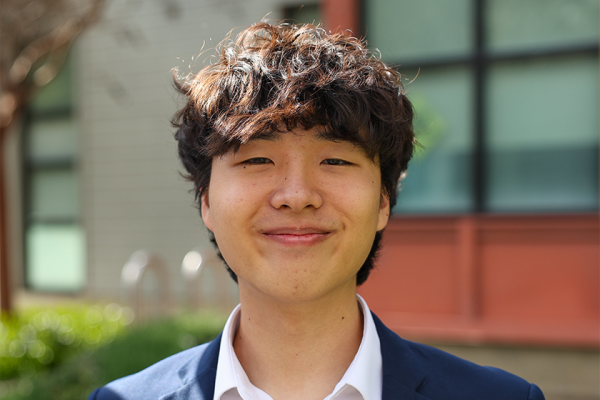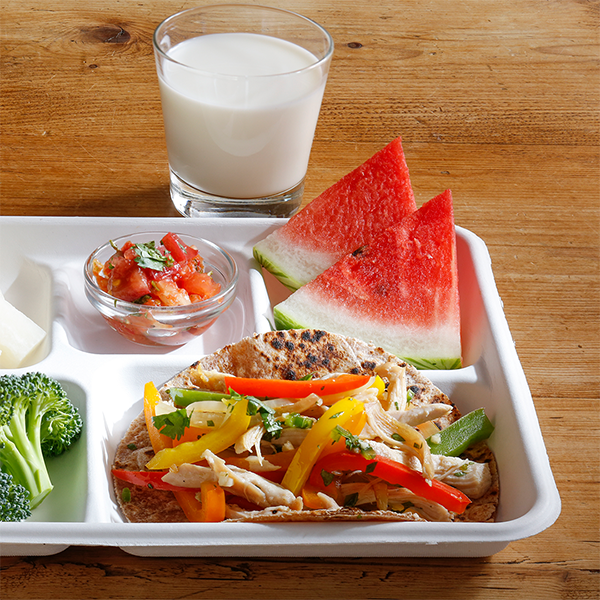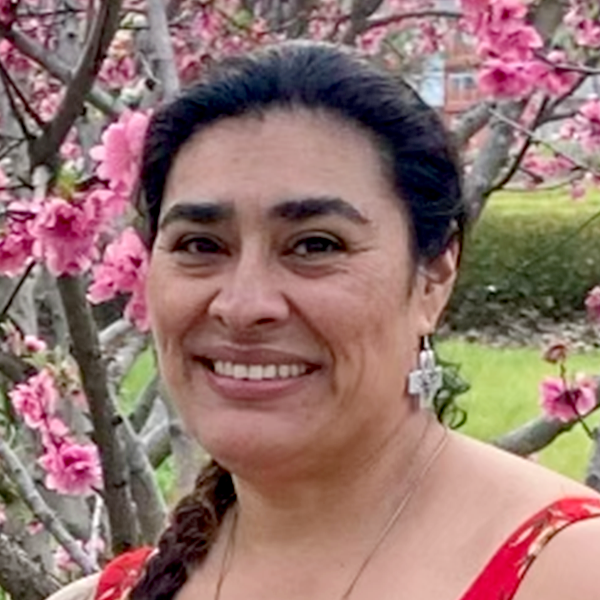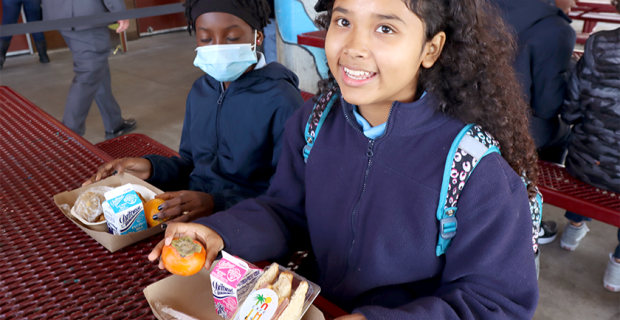The Impact of School Meals for All

California's School Meals for All program provides 5.9 million TK–12 students with access to free breakfast and lunch each school day. The program has been successful: In the first year, 2 million more school meals were served, and the state projects an increase of 60 million meals in the 2024–2025 school year. The Center for Ecoliteracy successful advocated for California to become the first state to adopt free School Meals for All in 2021, and our advocacy has continued to ensure full funding for the program as well as complementary investments that support more freshly-prepared, locally-sourced school meals.
School Meals for All is essential for the 44% of food-insecure families in California that do not qualify for federal school meal assistance. And research shows that in addition to increasing student participation, free school meal programs improve student diet quality, attendance rates, and academic performance. Below, we're sharing the voices of students and school nutrition professionals who are impacted by this program.

“School Meals for All means eating more than once a day. It means not worrying about whether or not I have enough money to eat for the week.”
11th Grade Student, Garden Grove Unified School District

“School Meals for All is a huge help for not only my busy schedule, but also my mom's. Having a free, reliable meal at school is a huge time saver; we no longer have to worry about prepping lunch the morning of—and the extra energy I have is now focused on sleeping and studying!”
David, Student, Santa Ana Unified School District

“Before School Meals for All, we had to rely on the school district’s general fund to cover meal debt. Now, the state funding allows us to invest in higher quality food.”
Yaz Widatalla, Director of Food and Nutrition Services, New Haven Unified School District

“School Meals for All ensures that schools are places for learning. Now, more students are fueling their bodies the way they should.”
Bethany, Student, Jefferson Union High School District

“School Meals for All shows students a commitment that schools care about their basic needs and will always follow through on that promise.”
Walter, Student, Nevada Joint Union High School District

“Now that school meals are free, it’s opened the door for everyone to participate. We don’t have to worry about not having enough money. My friends and I love the school lunch.”
Kevin, Student, Fullerton Joint Union High School District

“The previous divisional stigmas of free, reduced, or paid meals are gone. School Meals for All has made a positive impact on our ability to serve all students.”
Rhima Ramirez, Cafeteria Lead, Twin Rivers Unified School District

“School Meals for All is working, and is a model for other states to invest in school meals to reduce stigma and child hunger.”
Juliette Siu, MS, RDN, Child Nutrition Operations Manager, Live Oak School District

“School Meals for All funding allows me to invest in procuring food from local farms and businesses to serve high-quality school meals.”
Christina Lawson, Director of Food and Nutrition Services, Western Placer Unified School District




